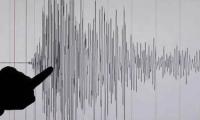ISLAMABAD: Conceding before a parliamentary panel difficulties in materializing dollar inflows, State Bank of Pakistan Governor Jameel Ahmed said Pakistan was expecting $18 to $20 billion in inflows from multilateral and bilateral creditors in the second half (Jan-June) period of the current fiscal year to overcome persistent liquidity crunch.
The MNAs, irrespective of the political divide, pointed out during the proceedings of the National Assembly Standing Committee on Finance that triple rates on exchange rate existed and recommended placing a uniform rate on the rupee-dollar exchange rate.
“We are facing difficulties in generating dollar inflows but there is no possibility of a default on the external front in the current fiscal year. It will be difficult to generate dollar inflows in the shape of commercial loans and international bonds. We are expecting to generate $18-$20 billion in the second half of the current fiscal year” the State Bank of Pakistan governor informed the Members of the National Standing Committee on Finance at a briefing at the Parliament House on Friday.
The parliamentarians belonging to the treasury benches including PMLN MNA Ali Pervez Malik and PPP MNA Dr. Nafisa Shah strongly criticized the government policies for non-materializing of dollar inflows mainly because of inconclusive IMF talks for accomplishing the 9th review under the Extended Fund Facility (EFF).
Ali Pervez Malik warned that the private sector might plunge into insolvency in the second round of the looming crisis. He was of the view that the current account deficit was no more the problematic area but the executive was failing in materializing dollar inflows mainly because the IMF was using dillydallying tactics. He was of the view that the IMF programme was suspended and even inflows from the multilateral and bilateral creditors were attached with the revival of the stalled programme.
Even the chairman of the Standing Committee on Finance belonging to the PMLN, Qaiser Sheikh, joined hands with the members for criticising the government, adding that he could apprise the government about ground realities but Minister for Finance Ishaq Dar, the Finance Secretary and the FBR Chairman did not bother to attend the meeting. He said that he was making efforts to contact the minister for last several days but failed.
When the members severely criticized the government, Minister of State for Finance and Revenues Dr Aisha Ghaus Pasha said the IMF programme was not suspended and they were engaged with it. Qaiser Sheikh inquired why the government was not talking openly, which triggered a heated debate among the MNAs and Minister of State Aisha Ghaus Pasha who said there was no decision yet on combining the 9th and 10th reviews under the IMF programme.
She said that the country had failed to materialise the much- needed structural reforms in last 75 years. “Pakistan-IMF negotiations were struck mainly because of living beyond our means since inception of the country. The energy sector is major bone of contention where the IMF recommends to recover the cost of generation. The circular debt of power and gas sector escalated to Rs 4 trillion. The second reason for the delayed agreement with the IMF is persistent inability of governments to generate increased tax revenues. Thirdly, the IMF was opposing subsidies and exporters especially textile tycoons of APTMA secured subsidies on power and gas tariffs.” She said that when the government was pursuing structural reforms even traders protested on roads for not paying Rs 3,000 per month fixed tax. “These protesters made structural reforms non-starters in the country,” she added.
Dr. Nafisa Shah said that she was disappointed that the government could not withstand the front of protesters. She said the defeatist approach could not provide solutions to existing problems as the PDM-led government had come into power to resolve problems instead of presenting excuses. MNA Ali Pervez Malik said he remained chairman of the APTMA and asked the minister to disclose those areas where subsidies were doled out.
Earlier, the SBP governor said that out of total external debt servicing requirements, the government had paid back $6 billion and got a rollover of $4 billion. “The remaining external debt servicing requirements stands at $13 billion,” he said and added that the current account deficit was hovering around $2.8 billion in the first four months and it was projected to touch $10 billion by the end of the current fiscal year.
He said that the SBP had cleared 30,000 Letters of Credit up to October 31, 2022, in the range of $100,000. Now the backlog of the last two months might have accumulated, he said and added that he did not have an exact number of stuck-up LCs. He said that he would be holding meetings with the business community the next week to get recommendations for clearing pending LCs as early as possible. He said that he was not happy to see holding up LCs.
The chairman of the panel said that raw material-related consignments had got stuck up because of which prices went up by 10pc in the last 30 days.
Commercial and business chartered flights flying from US to India and vice versa fly over Pakistan
Put into bat, the Qalandars never truly found their rhythm, collapsing to 139 all out in the final over
Justice Muhammad Ali Mazhar remarked that “we should resolve the case of judicial appointments now”
Court notes deputy registrar has no powers to withdraw case from one bench and assign it to another
At outset of NA session, just prior to Question-Hour, PTI legislator Iqbal Afridi pointed out quorum
Funding shortfall means we are looking to regroup to an organisation of around 2,100 staff, says Fletcher







